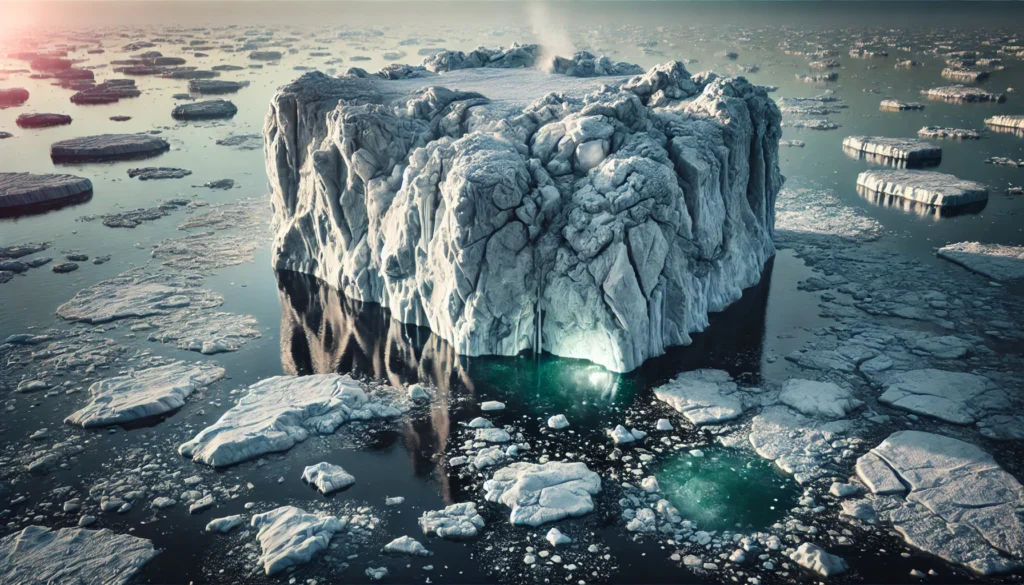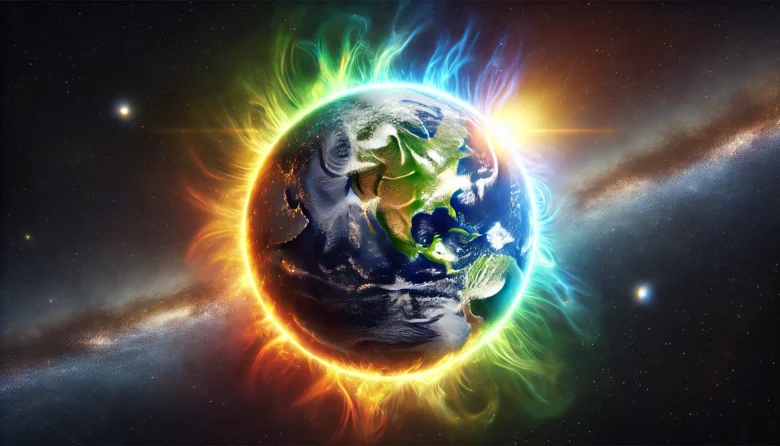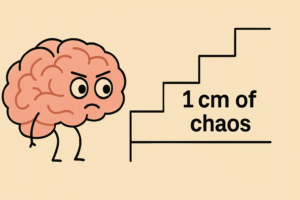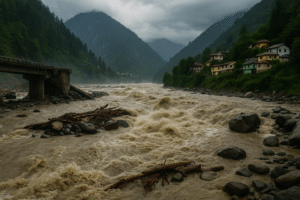Imagine stepping into a car parked in the sun for hours. The moment you open the door, you feel an intense wave of heat trapped inside. This is a tiny example of what happens to our planet due to the greenhouse effect. But what exactly is the greenhouse effect, and how does it influence our world?
Introduction
The term “greenhouse effect” often pops up in conversations about climate change, but its scientific roots go much deeper. Essentially, the greenhouse effect refers to the way Earth’s atmosphere traps some of the energy from the Sun, warming the planet. Without this natural process, life as we know it would not exist because the Earth would be too cold to support most forms of life. However, due to human activities, this natural effect is now becoming harmful.
So, let’s break down the science behind the greenhouse effect, how it works, and why it’s crucial for the future of our planet.
The Greenhouse Effect: A Natural Process
The greenhouse effect is a natural phenomenon that’s been around for billions of years. In simple terms, it’s how our atmosphere traps heat from the Sun. When sunlight reaches Earth, it passes through the atmosphere and hits the surface, where it’s absorbed and then radiated back into the atmosphere as infrared energy or heat. Greenhouse gases, like carbon dioxide (CO₂), methane (CH₄), and water vapour, trap this heat, preventing it from escaping into space.
Think of these gases as a blanket around the Earth. They keep the planet warm enough for life by holding onto some of that infrared energy. Without this “blanket,” Earth’s average temperature would be freezing -18°C, compared to the current comfortable average of around 15°C.

Human Activities and the Enhanced Greenhouse Effect
Now, the greenhouse effect is not inherently bad. It’s what keeps us alive! The problem arises when human activities increase the concentration of greenhouse gases in the atmosphere. This is called the “enhanced greenhouse effect,” and it leads to global warming.
The burning of fossil fuels (coal, oil, natural gas) for energy and transportation releases excessive CO₂ into the atmosphere. Deforestation, industrial processes, and agricultural practices also contribute to increased levels of methane and nitrous oxide (N₂O). These additional gases trap even more heat, causing the planet’s temperature to rise at an alarming rate.
Here’s a relatable example: imagine adding more and more blankets on top of yourself. At first, you feel warm and cozy, but eventually, it becomes unbearably hot. That’s what’s happening to our planet due to human activities.
Case Study: The Impact of the Greenhouse Effect on India
India, like many other countries, is experiencing the effects of the enhanced greenhouse effect firsthand. Rising temperatures have led to more frequent heatwaves, extreme rainfall, and unpredictable monsoon patterns. This has a direct impact on agriculture, which employs more than half of the population. In regions like Punjab and Haryana, farmers have seen shifts in growing seasons, threatening food security.
A study conducted by the Indian Meteorological Department showed that the frequency of severe heatwaves has doubled over the past 50 years. This isn’t just uncomfortable; it’s deadly. In 2015, a heatwave in India claimed the lives of over 2,500 people. Scientists are warning that these extreme weather events will only become more common as the greenhouse effect intensifies.
How Do We Know This?
Scientists have been studying the greenhouse effect for over a century. One of the earliest studies was conducted by Swedish scientist Svante Arrhenius in 1896. He was the first to link the burning of fossil fuels to global warming. Since then, countless experiments, satellite data, and climate models have confirmed that the enhanced greenhouse effect is responsible for the rising global temperatures.
One key piece of evidence is the correlation between the increase in atmospheric CO₂ levels and the rise in global temperatures. Since the Industrial Revolution, CO₂ levels have increased by 50%, and global temperatures have risen by 1.1°C. While this may not sound like much, even a small increase in global temperature can lead to severe consequences for ecosystems, weather patterns, and sea levels.
Consequences of the Enhanced Greenhouse Effect
Melting Polar Ice Caps: One of the most visible effects of the greenhouse effect is the melting of polar ice caps. As the Earth warms, the ice in the Arctic and Antarctic regions melts, contributing to rising sea levels. This is especially alarming for coastal cities like Mumbai and Kolkata, where millions of people live just a few meters above sea level.
Ocean Acidification: The excess CO₂ in the atmosphere doesn’t just stay there; about 30% of it is absorbed by the oceans. This leads to ocean acidification, which harms marine life, especially coral reefs and shellfish. The Great Barrier Reef, for example, has experienced mass bleaching events due to warmer ocean temperatures.
Extreme Weather: The enhanced greenhouse effect has been linked to more frequent and severe weather events like hurricanes, droughts, and floods. These events not only destroy property and livelihoods but also cost billions in recovery efforts.
Impact on Agriculture: As mentioned earlier, changing climate patterns affect agriculture, which is a major concern for India. Farmers are seeing more crop failures, water shortages, and shifts in growing seasons. This threatens food security, increases poverty, and fuels rural-to-urban migration.
What Can Be Done?
While the greenhouse effect is a global issue, there are steps we can take to mitigate its effects. On an individual level, we can reduce our carbon footprint by using renewable energy sources, consuming less meat, and supporting sustainable businesses. Governments need to play their part, too, by implementing stricter environmental policies and investing in clean energy technologies.
India has already taken steps in the right direction with the National Action Plan on Climate Change, which aims to promote sustainable development while reducing the country’s carbon emissions. Additionally, the expansion of solar energy projects, like the Jawaharlal Nehru National Solar Mission, shows promise in curbing the nation’s dependence on fossil fuels.
Conclusion
The greenhouse effect is a complex but natural process that allows life to thrive on Earth. However, human activities have disrupted this delicate balance, leading to an enhanced greenhouse effect and global warming. The consequences are already visible, from rising sea levels to more frequent extreme weather events. But it’s not too late to act. By making conscious changes in our lifestyle and supporting global efforts to reduce greenhouse gas emissions, we can slow down the effects of global warming and protect our planet for future generations.
Author’s Note
As we navigate the challenges of climate change, understanding the greenhouse effect is crucial. I hope this blog helped simplify the science behind this phenomenon and inspired you to think about how we can all contribute to a healthier planet.
G.C., Ecosociosphere contributor.
References and Further Reading
- NASA: The Causes of Climate Change
- The Guardian: Climate Change | Pearltrees. http://www.pearltrees.com/u/74202061-ultimate-environment-guardian
- What is global warming – WWF-Australia | What is global warming | WWF Australia. https://wwf.org.au/what-we-do/climate/what-is-global-warming/
- Emissions – karmametrix.com. https://karmametrix.com/glossario/emissions/
- To End Global Warming: We Need Oil…To Be Left In The Ground – Japan Subculture Research Center. http://www.japansubculture.com/to-end-global-warming-we-need-oil-to-be-left-in-the-ground/
- Powering the Future: What Is Clean Energy and Why It Matters – Anker AU. https://www.anker.com/au/blogs/outdoor/what-is-clean-energy
- Climate change and global grain trade: challenges and opportunities | Feed Strategy. https://www.feedstrategy.com/business-markets/international-trade/article/15637408/climate-change-and-global-grain-trade-challenges-and-opportunities
- Net Zero: Understanding the Concept and Its Importance. https://www.edugovpresspublishers.com/net-zero-understanding-the-concept-and-its-importance/
- Greenhouse Effect Paragraph for hsc, ssc and in 100-500 words | Shopnik. https://shopnik.com.bd/greenhouse-effect-paragraph
- Ice Age – a time capsule storing valuable information. https://wodnesprawy.pl/en/ice-age-a-time-capsule-storing-valuable-climate-information/




